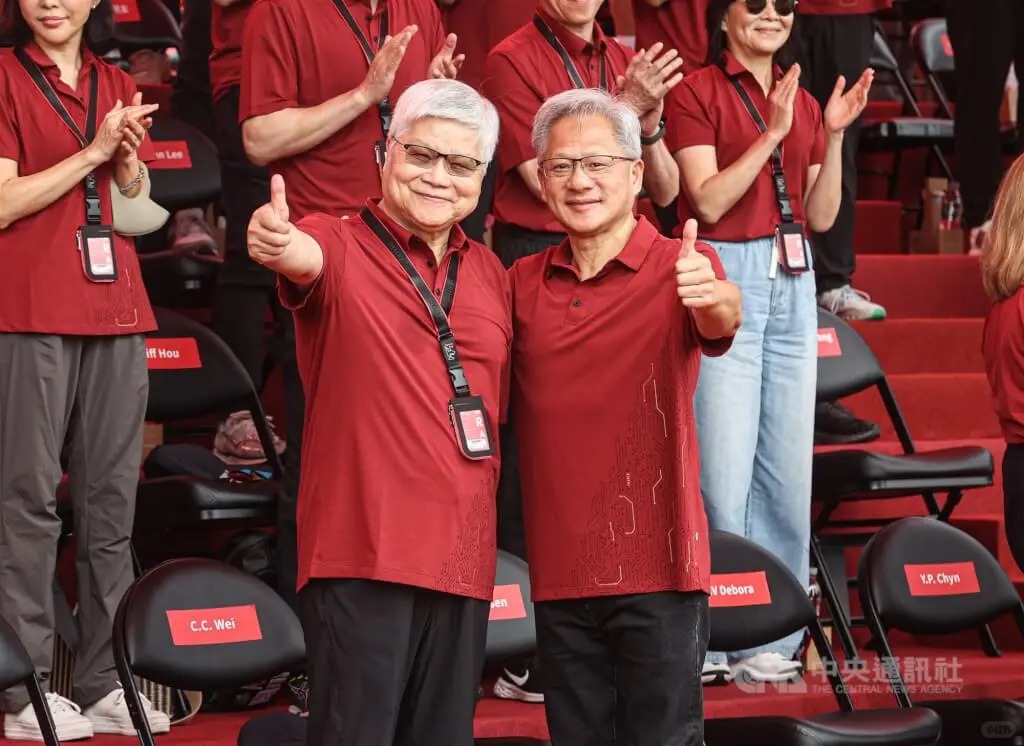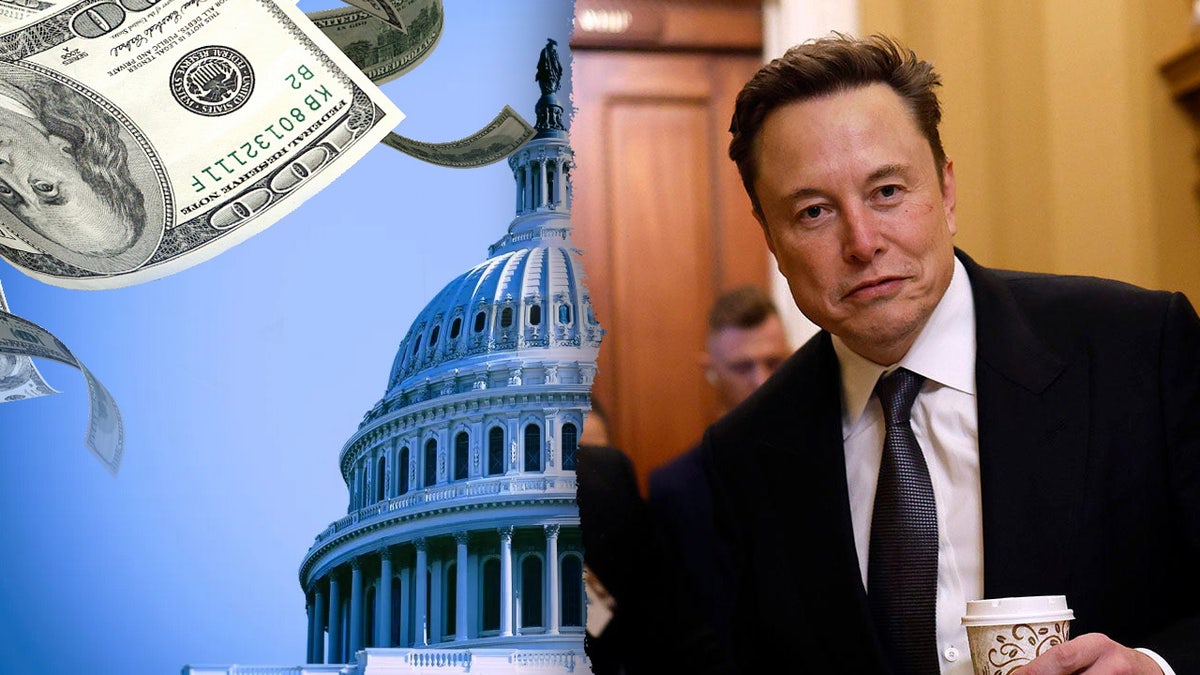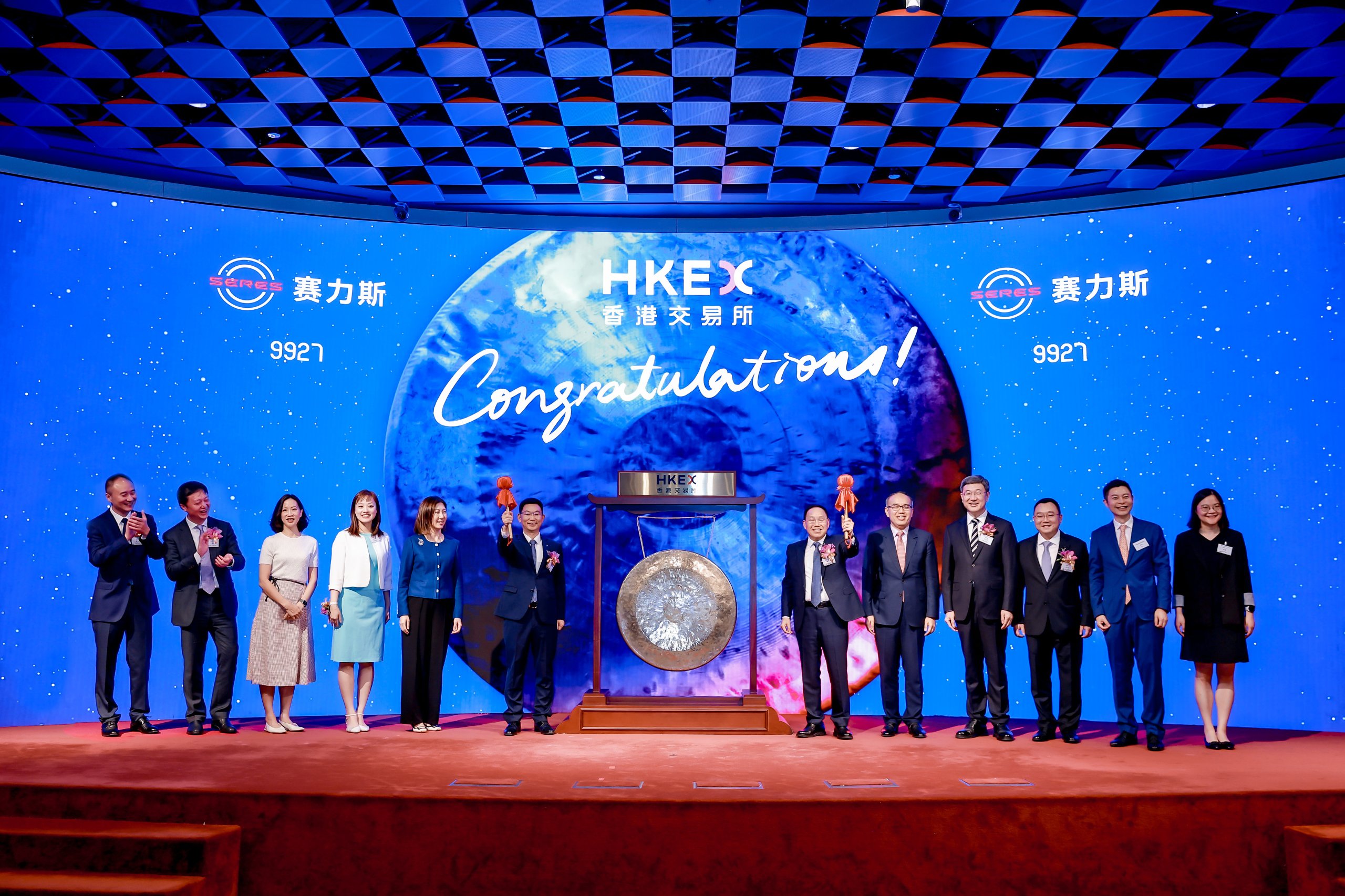Huang Renxun took a photo with TSMC CEO Wei Zhe’s family while attending the TSMC Games in Hsinchu. Nvidia CEO Huang Renxun flew to Taiwan on November 7-8 to request TSMC to increase chip production capacity due to the surge in demand for artificial intelligence semiconductors. TSMC CEO Wei Zhe Jia confirmed this request and pointed out that their 3-nanometer production line currently has a full monthly capacity of 110000 pieces, and is expected to expand by 45% to 160000 pieces per month by 2026. Nvidia is expected to receive a significant portion of this capacity. Huang Renxun emphasized the important role of TSMC, saying, “Without TSMC, there would be no Nvidia.
NVIDIA CEO Jensen Huang visited Taiwan over the weekend and made a high-profile stop in Hsinchu, where he attended a company sports event hosted by Taiwan Semiconductor Manufacturing Company (TSMC) and posed for photos with TSMC Chief Executive Officer C.C. Wei. The brief, publicized encounter underscored the deepening ties between Nvidia and the world’s largest contract chipmaker at a time of surging demand for advanced semiconductors driven by artificial intelligence workloads.
Huang flew to Taiwan on Nov. 7 and stayed through Nov. 8 for a series of meetings, according to company confirmations. During the trip he formally requested that TSMC expand production capacity to help meet Nvidia’s rapidly growing chip requirements. The ask reflects the dramatic uptake in demand for AI accelerators — specialized GPUs and custom chips that power training and inference for large language models, generative AI systems, and other compute-intensive applications.
TSMC responded publicly to the request, with CEO C.C. Wei confirming that Nvidia had sought more foundry capacity. Wei also provided detail on the company’s current and planned output at its advanced 3-nanometer (3nm) process node: the 3nm production line is presently operating at a monthly wafer capacity of about 110,000 units, and TSMC plans to expand that capacity by roughly 45% to reach approximately 160,000 wafers per month by 2026. Wei said Nvidia is expected to receive a “substantial portion” of the expanded capacity.
Advanced nodes like 3nm are crucial for high-performance AI chips because they enable greater transistor density and improved power efficiency — properties that are critical when building GPUs and accelerators designed to deliver intense parallel compute. Nvidia’s current data-center GPU families, and rumored future products, generally rely on the most advanced process technologies available from leading foundries like TSMC to maximize performance-per-watt and overall silicon efficiency.
Huang emphasized the strategic importance of TSMC to Nvidia’s business in a succinct remark captured during the visit: “No TSMC, no Nvidia.” The comment highlighted the dependence of design-centric chip companies on specialized contract manufacturers for the physical realization of their silicon. TSMC’s foundry capabilities, capacity planning, and long-term production roadmaps directly affect the supply, release cadence, and competitive positioning of Nvidia’s products.
The timing of Huang’s visit and the capacity request comes amid a broader industry scramble to secure wafer allocations as demand for AI compute continues to rise. Hyperscalers, cloud providers, and AI-focused hardware firms have been increasing orders for advanced-node production, while TSMC and other foundries weigh trade-offs across customers and product portfolios. TSMC’s confirmation that it plans to scale 3nm capacity by nearly half by 2026 signals a major commitment to servicing high-end AI and HPC workloads, but it also highlights a lag between demand surges and the lead time required to bring new foundry capacity online.
Analysts say such expansion plans are consistent with a multi-year cycle of capital investment in fabrication, run-rates, and capacity optimization that foundries undertake to balance demand. Even with TSMC’s planned increases, the allocation of wafer capacity will remain a delicate process, influenced by contract terms, long-term supply agreements, and strategic priorities among multiple large customers.
Nvidia’s push for greater production capacity aligns with its continued growth in data-center revenue, driven by GPU sales for AI training and inference. The company has been a dominant force in supplying the chips that power many of today’s generative AI services and enterprise deployments, and securing manufacturing slots at TSMC is a crucial element in sustaining that growth.
The public nature of the Hsinchu meeting — framed as part of a lighter corporate event rather than a formal factory tour — served both companies. For Nvidia, the appearance reinforced a message of close collaboration with TSMC amid upward demand projections. For TSMC, the visit and accompanying confirmation of capacity expansion put the foundry’s investment plans on record while signaling to the market that it is taking steps to address the AI-driven surge in semiconductor demand.
Looking ahead, the interplay between fabs and fabless designers will continue to shape the semiconductor industry’s capacity dynamics. As companies such as Nvidia press for more manufacturing throughput, TSMC and its peers will need to balance short-term customer requests with long-term strategic investments to ensure supply resilience. For now, the public reconciliation of needs between Nvidia and TSMC — symbolized by the weekend photo in Hsinchu and the wafer-capacity roadmap Wei laid out — provides a snapshot of how critical foundry partnerships are becoming in the era of generative AI.
















- 最新
- 最热
只看作者